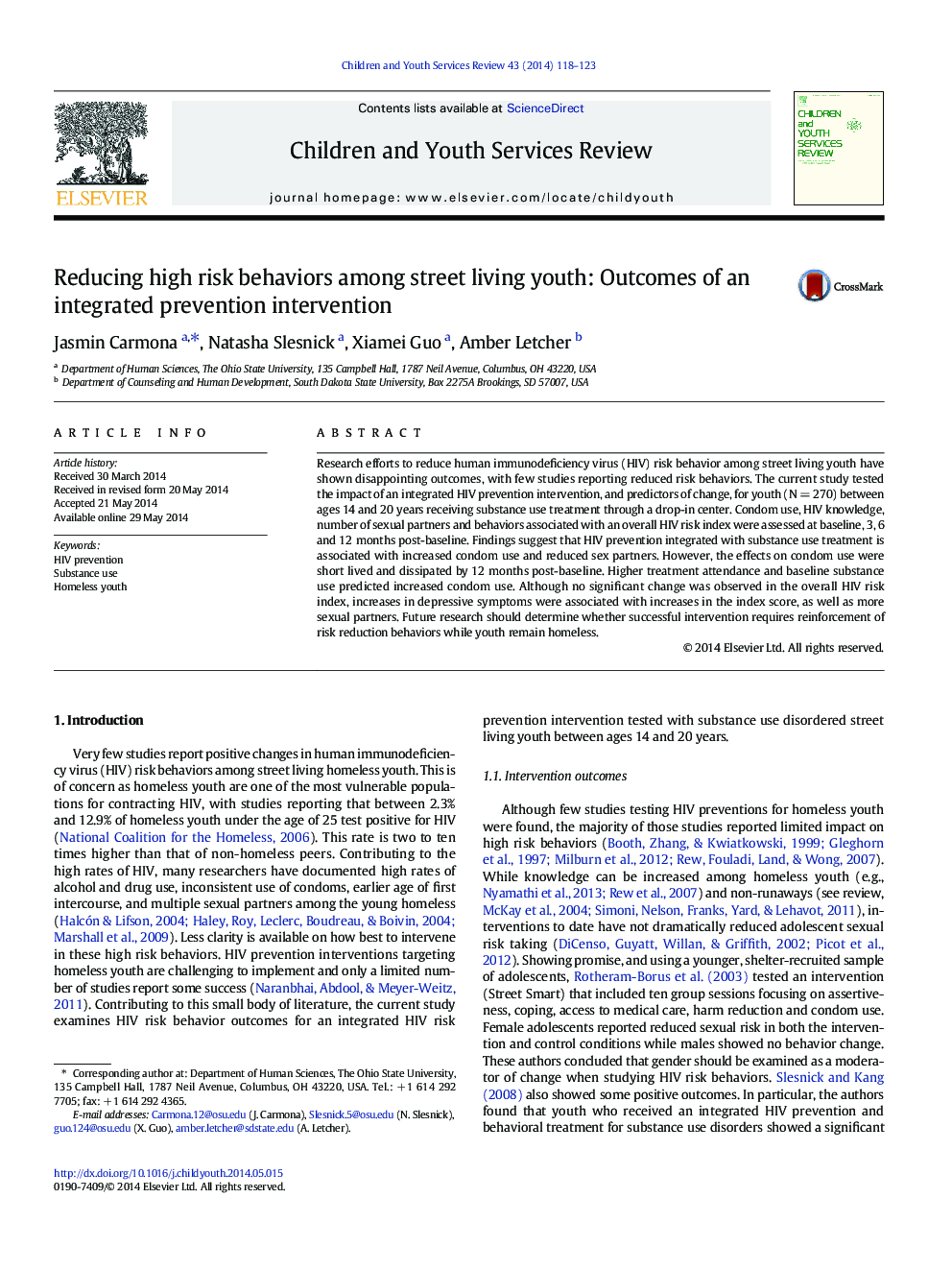| Article ID | Journal | Published Year | Pages | File Type |
|---|---|---|---|---|
| 6834308 | Children and Youth Services Review | 2014 | 6 Pages |
Abstract
Research efforts to reduce human immunodeficiency virus (HIV) risk behavior among street living youth have shown disappointing outcomes, with few studies reporting reduced risk behaviors. The current study tested the impact of an integrated HIV prevention intervention, and predictors of change, for youth (NÂ =Â 270) between ages 14 and 20Â years receiving substance use treatment through a drop-in center. Condom use, HIV knowledge, number of sexual partners and behaviors associated with an overall HIV risk index were assessed at baseline, 3, 6 and 12Â months post-baseline. Findings suggest that HIV prevention integrated with substance use treatment is associated with increased condom use and reduced sex partners. However, the effects on condom use were short lived and dissipated by 12Â months post-baseline. Higher treatment attendance and baseline substance use predicted increased condom use. Although no significant change was observed in the overall HIV risk index, increases in depressive symptoms were associated with increases in the index score, as well as more sexual partners. Future research should determine whether successful intervention requires reinforcement of risk reduction behaviors while youth remain homeless.
Related Topics
Health Sciences
Medicine and Dentistry
Perinatology, Pediatrics and Child Health
Authors
Jasmin Carmona, Natasha Slesnick, Xiamei Guo, Amber Letcher,
